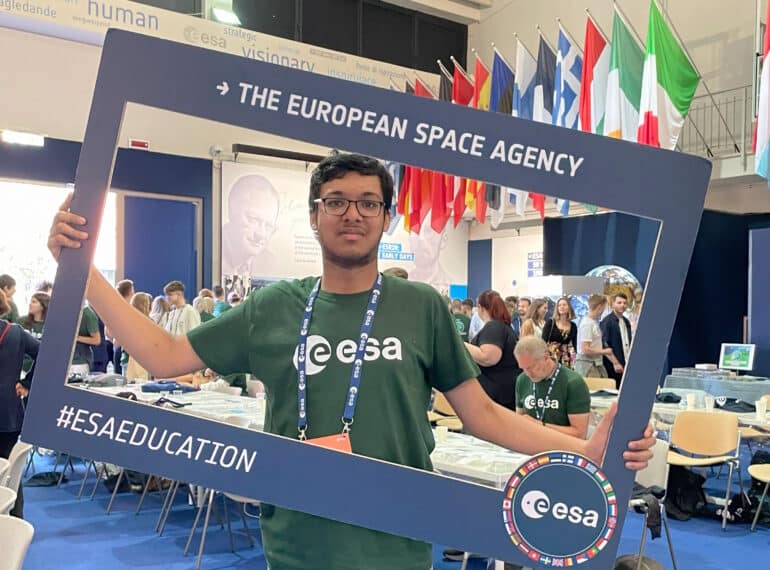
QE’s Paarth Aggarwal spent three days at a European Space Agency base in Italy after being named the UK winner in an international competition.
 Paarth, of Year 10, triumphed in the ESA’s Climate Detectives challenge after impressing judges with his AI-driven study into tackling electronic waste in Barnet.
Paarth, of Year 10, triumphed in the ESA’s Climate Detectives challenge after impressing judges with his AI-driven study into tackling electronic waste in Barnet.
His three days at the ESA Centre for Earth Observation at Frascati, near Rome, included a tour of the facility – “the main highlight for me personally” – and an awards ceremony where he received his prize “with bigger audiences than I had possibly imagined”.
Headmaster Neil Enright said: “My sincere congratulations go to Paarth on this great achievement: he showed initiative in applying for the competition, perseverance in pulling the project together, and great ability in completing it to such a high standard. And what an opportunity it was to spend time at one of Europe’s leading space research facilities!”
The competition brief allowed entrants not only to focus on climate change, but also on all aspects of caring for the planet. Paarth’s Next Gen Ninja entry was among winning submissions from 18 European countries; all the winners were invited to Frascati as their prize.
“My inspiration to enter stemmed from my deep concern for the environment and my passion for leveraging technology to combat climate change,” said Paarth. “The competition presented a unique opportunity to contribute to a cause that I care deeply about, using technology to address one of the most pressing issues of our generation.”
His study focused on the disposal and recycling of electronic devices, taking into account the significant environmental and health risks if improperly handled. More specifically, he explored the design and implementation of initiatives aimed at empowering Barnet residents to address e-waste. “By understanding how such initiatives can effectively raise awareness, educate residents, and promote sustainable practices, the study sought to identify strategies that foster meaningful engagement and action…ultimately, the goal is to promote a more sustainable future for Barnet.”
 Paarth sent out a survey to residents: the results, he said, were “shocking”, with only a small percentage aware of the hazards of e-waste. Problems he identified included limited access to relevant information on a community website. “Moreover, the waste facilities lack specialised equipment and trained personnel to safely process and recycle e-waste.
Paarth sent out a survey to residents: the results, he said, were “shocking”, with only a small percentage aware of the hazards of e-waste. Problems he identified included limited access to relevant information on a community website. “Moreover, the waste facilities lack specialised equipment and trained personnel to safely process and recycle e-waste.
“These findings highlight the necessity for a dedicated information centre and for a focus on developing and implementing more accessible e-waste collection and efficient processing systems.
“Throughout the competition, I honed several key skills, including data analysis, and enhanced my knowledge of the development of AI-powered chatbots. Working with satellite and local data gave me valuable experience in interpreting data effectively.”
The facility in Italy has over the past three decades collected EO (earth observation) data from ESA satellites looking at factors such as water content in lakes and algae concentrations to understand Earth’s changing geology. Available free to anyone, the data is used by research organisations and government institutions in areas such as: the prediction and analysis of climate-related disasters; rural urban management; agriculture; forestry management; the study of glaciers; and mining.
“In a workshop, I learned the use of EO data gathered from satellites such as Sentinel-2 and Sentinel-3. ESA taught us how they are using the data to save numerous human lives across the globe by predicting climate-related disasters, such as wildfires,” said Parth.
“Being named a winner was an overwhelming and humbling experience. The acknowledgment from ESA, a leading space organisation, was particularly rewarding.”
 Use of AI: the technical details
Use of AI: the technical details
Paarth is an enthusiastic advocate of AI. Here he sets out the important role the technology played in his competition entry.
“Using Microsoft Azure OpenAI cloud environment, I deployed a GenAI-powered chatbot to provide residents with easy and 24/7 access to information when they ask questions in natural language regarding e-waste, helping them make informed decisions.
“I also developed a PoC (Proof of Concept) for an AI-powered app which can: help to detect the waste type through an ML model; incentivise residents for responsible disposal; and allow councils to proactively plan for the e-waste collection, enabling them to be economical and efficient in the waste collection process.”
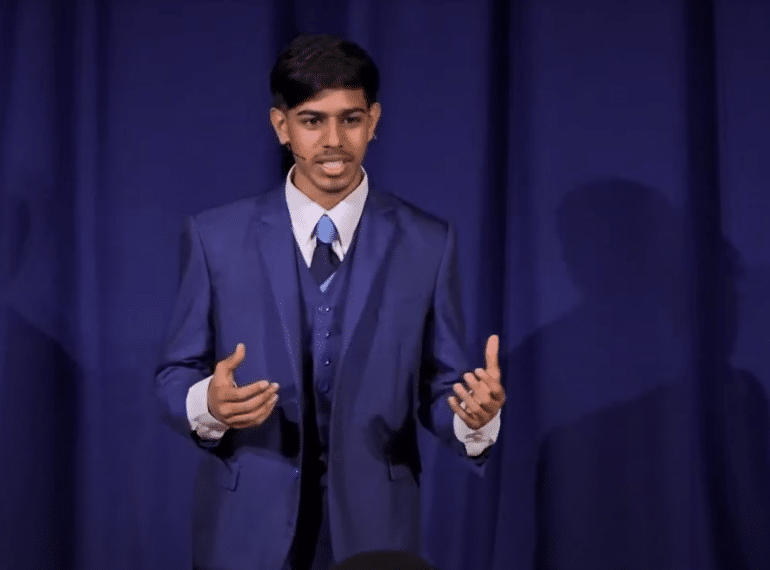
 He beat more than 400 entrants – and 11 other finalists – to triumph in the Gresham Oracy Competition run by Gresham College, London’s oldest higher education institute.
He beat more than 400 entrants – and 11 other finalists – to triumph in the Gresham Oracy Competition run by Gresham College, London’s oldest higher education institute. He began his presentation with the poetic account of human origins in the book of Genesis – “And so God created mankind in his own image, in the image of God he created them, male and female he created them,” continuing “And yet science endeavours to go one step further, to defy imperfection, to alleviate prodigious amounts of suffering, and to alter the very make-up of you and me.”
He began his presentation with the poetic account of human origins in the book of Genesis – “And so God created mankind in his own image, in the image of God he created them, male and female he created them,” continuing “And yet science endeavours to go one step further, to defy imperfection, to alleviate prodigious amounts of suffering, and to alter the very make-up of you and me.”
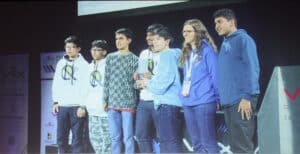 Teams Gearsquad, Constellation and CircuitBreakers will be heading for the States at the end of this month, having maintained strong performances at the national championships in Telford.
Teams Gearsquad, Constellation and CircuitBreakers will be heading for the States at the end of this month, having maintained strong performances at the national championships in Telford.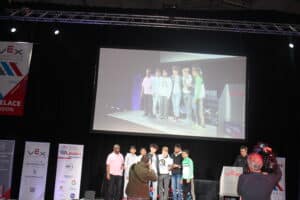 The three 2024 qualifiers sealed their qualification at the recent UK national championships, in which all 11 QE robotics teams took part.
The three 2024 qualifiers sealed their qualification at the recent UK national championships, in which all 11 QE robotics teams took part.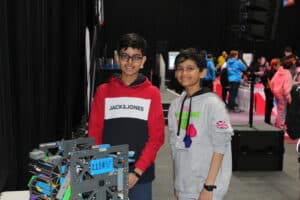 “QE performed well, ranking 25th and 26th in their divisions of 60-plus teams and both successfully being selected at Alliance Selection, being unfortunate to be knocked out at the round of 16, “said Mr Noonan. “Students loved the experience, despite the cold temperatures, particularly commenting on the beauty of Calgary.”
“QE performed well, ranking 25th and 26th in their divisions of 60-plus teams and both successfully being selected at Alliance Selection, being unfortunate to be knocked out at the round of 16, “said Mr Noonan. “Students loved the experience, despite the cold temperatures, particularly commenting on the beauty of Calgary.”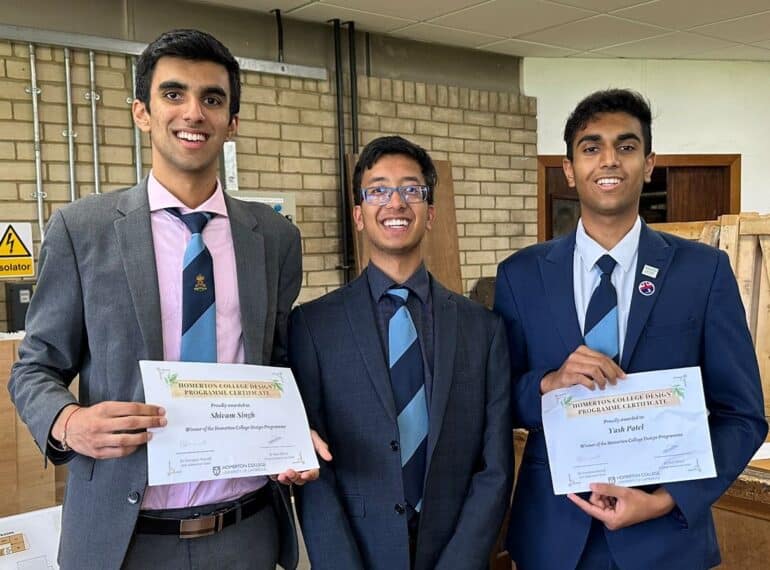
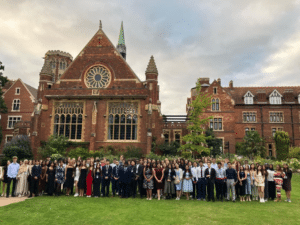 After being highly commended in the Homerton College Design Programme, Shivam Singh, Yash Patel and Om Patel were invited to a residential weekend, along with more than 200 other highly commended entrants of the design challenge and a parallel essay competition.
After being highly commended in the Homerton College Design Programme, Shivam Singh, Yash Patel and Om Patel were invited to a residential weekend, along with more than 200 other highly commended entrants of the design challenge and a parallel essay competition.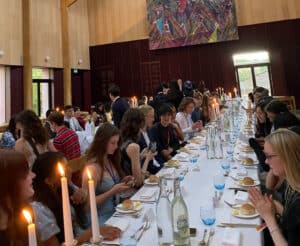 The QE trio, who are now in Year 13, designed a speaker to reduce noise pollution caused by machinery in the construction industry.
The QE trio, who are now in Year 13, designed a speaker to reduce noise pollution caused by machinery in the construction industry.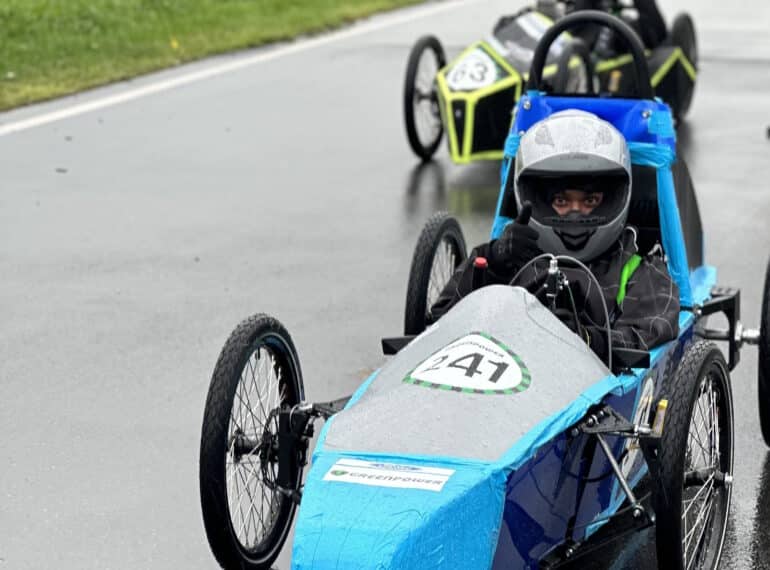
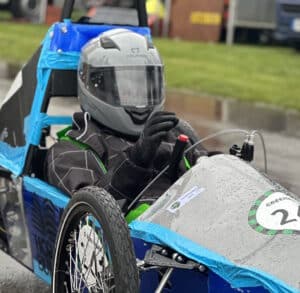 Having gathered information at the Dunsfold Park track in Surrey early in September, the Year 11 team travelled to Castle Combe in Wiltshire for their first competitive outing.
Having gathered information at the Dunsfold Park track in Surrey early in September, the Year 11 team travelled to Castle Combe in Wiltshire for their first competitive outing. The boys duly threw themselves into preparing for the rigorous scrutineering process. “Following some adjustments to the braking system, and with the absolute minimum amount of time left, the team passed all tests, with only small notes on adjustments required for future races.
The boys duly threw themselves into preparing for the rigorous scrutineering process. “Following some adjustments to the braking system, and with the absolute minimum amount of time left, the team passed all tests, with only small notes on adjustments required for future races.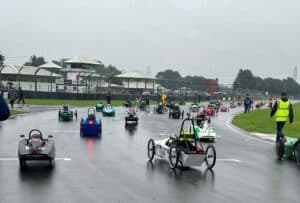 Buoyed by their success in reaching the tight deadline, the boys set about trying to better their first race score and duly achieved this, ending the day with a score of 22.59. (Greenpower F24 race results are determined by a formula based on furthest distance travelled within the 90-minute time period, taking the better figure from the two races.)
Buoyed by their success in reaching the tight deadline, the boys set about trying to better their first race score and duly achieved this, ending the day with a score of 22.59. (Greenpower F24 race results are determined by a formula based on furthest distance travelled within the 90-minute time period, taking the better figure from the two races.) “As the season unfolds, the 2023–24 Greenpower team will be looking for around four willing Greenpower apprentices from Year 9 to join the cause and ‘upskill’ with a view to competing in Year 10,” said Mr Noonan.
“As the season unfolds, the 2023–24 Greenpower team will be looking for around four willing Greenpower apprentices from Year 9 to join the cause and ‘upskill’ with a view to competing in Year 10,” said Mr Noonan.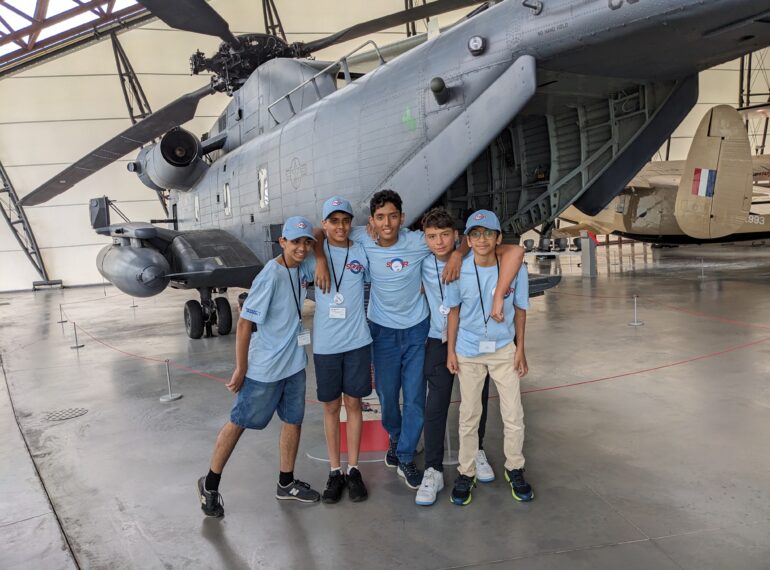
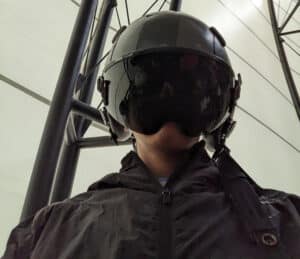 The group headed to Shropshire for the Summer Time Advanced Aerospace Residency (STAAR), at RAF Cosford, near Shifnal, and the nearby RAF Museum, learning from industry experts in a packed five-day programme.
The group headed to Shropshire for the Summer Time Advanced Aerospace Residency (STAAR), at RAF Cosford, near Shifnal, and the nearby RAF Museum, learning from industry experts in a packed five-day programme.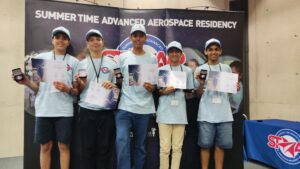 The QE five were among only 40 winners of the competition, which was open to those in Year 9 in 2022–2023. They were Keeyan Shah, Kyle Goldband, Neil Kulkarni, Keshav Aggarwal and Ishaan Mishra.
The QE five were among only 40 winners of the competition, which was open to those in Year 9 in 2022–2023. They were Keeyan Shah, Kyle Goldband, Neil Kulkarni, Keshav Aggarwal and Ishaan Mishra. The competition to secure their places involved completing four STEM tasks relating to: decryption/encryption; reconnaissance; creating a CAD model, and creating a team presentation.
The competition to secure their places involved completing four STEM tasks relating to: decryption/encryption; reconnaissance; creating a CAD model, and creating a team presentation.